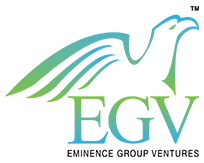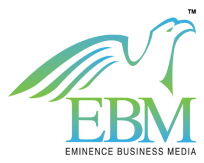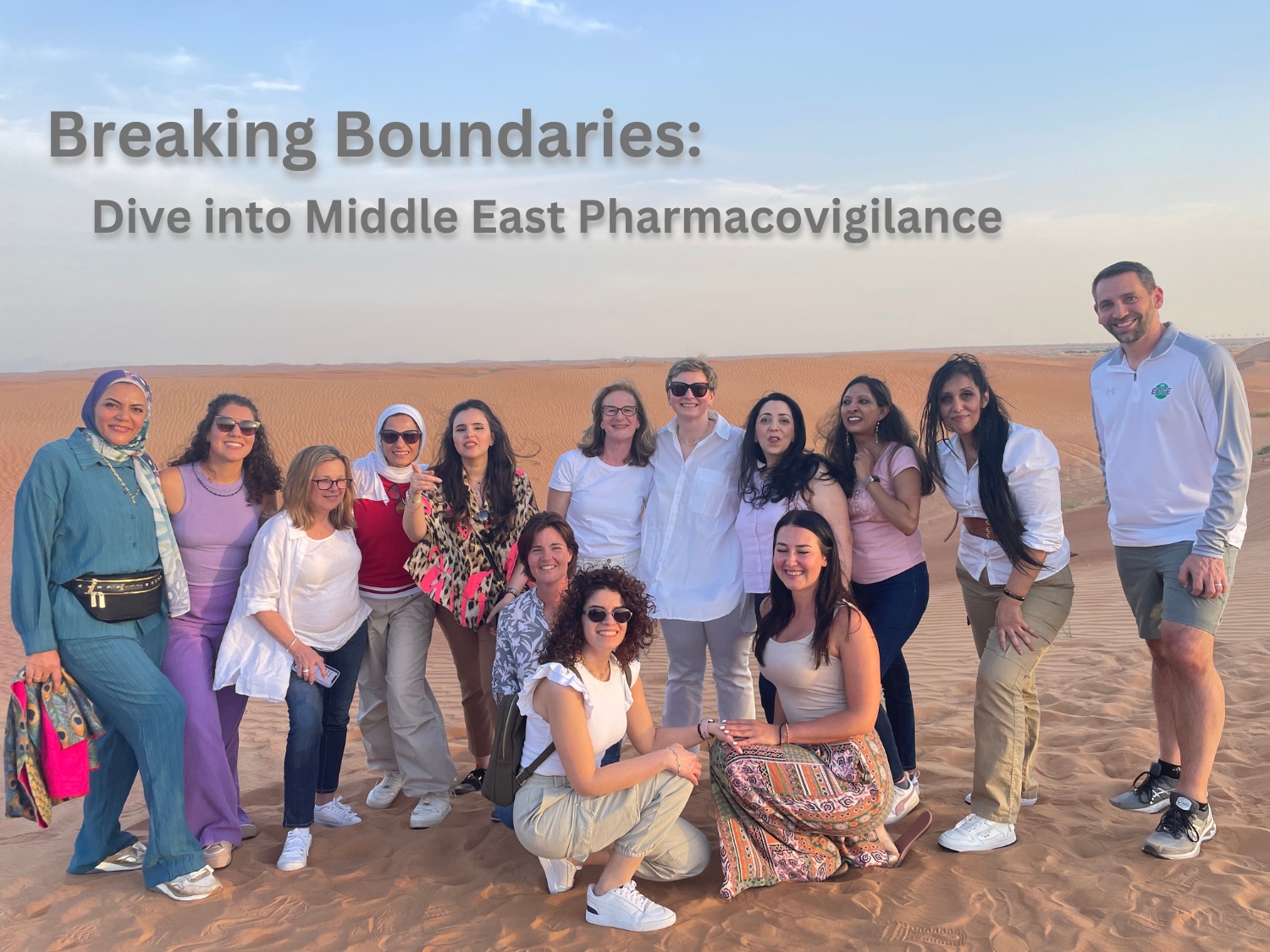
From Dubai to Global Reach: A candid conversation with Dr. Eman Gomaa, Middle East & Africa MEA Hub Lead, Abbvie
In the bustling heart of Dubai, amidst the vibrant energy of the pharma world, our encounter with Dr. Eman Gomaa was nothing short of bursting inspirations. Her passion for life and work resonated deeply, leading us to transform our candid discussion into an enlightening interview.
Meet Eman: The Trailblazer in Pharmacovigilance
With a rich tapestry of experience spanning back to 2012, Dr. Eman Gomaa stands as a stalwart in the realm of Pharmacovigilance (PV). Having navigated through multiple senior roles across diverse multinational pharmaceutical companies, she brings a wealth of expertise to the table. From her early days in Cairo, spearheading PV initiatives amidst the Egyptian guidelines’ infancy, to her pivotal role as the Middle East & Africa PV Hub Lead at AbbVie, Dr. Eman’s journey is a testament to resilience and dedication.
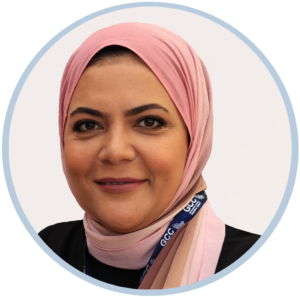
“To oversee a region of more than 66 countries, of which more than 40 are PV-regulated, you need to have processes in place to make sure your PV system is complying with this extensive regulatory framework.”
Question: Considering your extensive experience in Pharmacovigilance (PV) across different roles and regions, could you share some key insights into how PV practices have evolved, particularly in the Middle East and Africa, since you began your career in 2012?
“The PV regulations have been drastically growing within the Middle East & Africa region. In 2012, The Egyptian Pharmacovigilance Centre EPVC started raising awareness of PV and Patients’ safety among all the MAHs in Egypt and the Egyptian PV guidelines became effective. Of course! this was just the starting point in encouraging all the MAHs to start establishing their PV departments and get familiarized with all the requirements to ensure a robust PV system locally. In 2014, with the publishing of the Common Arab GVP, again EPVC led the efforts of holding a series of workshops to introduce all the modules and gradually supporting the MAHs to adopt these regulations and dedicate human and financial resources to have robust PV systems that focus on the utmost goal of ensuring Patients’ safety. Throughout the years, most of the countries in MEA were on board with their specific country PV regulations, and recurrent waves of training and workshops occurred.”
Question: Having worked in various multinational pharmaceutical companies, what challenges have you encountered in harmonizing PV practices and ensuring compliance with guidelines across different regions, and how have you addressed these challenges?
“I began to bring this topic in various Trade Associations meetings as well as in PV conferences where regulators are participating and explain the benefits of harmonization efforts for both the MAHs and the Regulatory Agency itself.”
“One of the greatest challenges I faced when I started my PV journey was the harmonization of the PSURs submission schedule in different countries. At that time, some countries accepted aligning the PSURs submission schedule to the EURD list and the harmonized birth date for all products, while others insisted on scheduling based on the registration date in the country itself, which created a huge workload, especially for multinational MAHs who must create multiple PSURs for individual product to comply with different country’s regulations. I began to bring this topic in various Trade Associations meetings as well as in PV conferences where regulators are participating and explain the benefits of harmonization efforts for both the MAHs and the Regulatory Agency itself. Luckily these discussions triggered some changes in the local regulations over time and currently most of the countries accept proposals for aligning to the EURD list specifically for the multinational MAHs.”
Question: As the Middle East & Africa PV Hub Lead at AbbVie, you play a crucial role in overseeing a vast region. Can you elaborate on the unique considerations to ensure effective pharmacovigilance in such a diverse and extensive geographical area?
“To oversee a region of more than 66 countries, of which more than 40 are PV-regulated, you need to have processes in place to make sure your PV system is complying with this extensive regulatory framework. The starting point is to establish a strong Regulatory Intelligence system, by which you monitor, analyze, and perform a thorough impact assessment process and then start implementation of these regulatory updates and integrate them into your existing practice. This requires a lot of agility, ongoing process enhancements, and an innovative mindset while always keeping an Audit/Inspection readiness attitude. The accountability my team members show through times of change is exemplary, and they always come up with innovative ideas to leverage technology and AI to provide sustained solutions to operational challenges.”
Question: Being a member of the International Society of Pharmacovigilance (ISoP) and representing the United Arab Emirates, how do you see the role of professional societies in fostering collaboration and knowledge-sharing in the field of pharmacovigilance, especially in the Middle East?
“Professional PV societies wield significant influence in shaping the local PV landscape and are widely recognized as essential stakeholders by regulatory agencies and Marketing Authorization Holders (MAHs). The ISoP Middle East Chapter has been instrumental in elevating PV awareness among professionals in the field and within the pharmaceutical industry at large. Through its initiatives and collaborations, the chapter has played a pivotal role in fostering a culture of vigilance and safety within the PV community and beyond.”
Question: Integration of intelligent PV systems has demonstrated significant advantages in enhancing drug safety and surveillance. Share your thoughts and experiences
Some limitations must be overcome in PV systems in both the MAHs and the regulatory agencies. First, these departments traditionally suffer from disjointed structures, making collaboration across groups and functions difficult.
“An intelligently resourced and highly functioning safety science organization not only enables risk management but also prescribes guidance, continuous safety monitoring, and identification of target patient populations so that benefit-risk for a product is optimized.”
Question: What challenges are faced in implementing intelligent PV systems, particularly in the Gulf countries?
“ Some limitations must be overcome in PV systems in both the MAHs and the regulatory agencies. First, these departments traditionally suffer from disjointed structures, making collaboration across groups and functions difficult. Second, safety sciences operations were transactional and process-focused, which led to data generation, yet failed to provide elucidation of findings. Finally, PV departments are constrained by the available technology and lack of resources.”
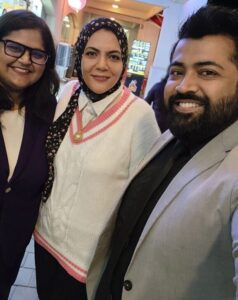
Dr. Eman Gomaa’s insights illuminates the intricate world of pharmacovigilance, showcasing the dedication and innovation required to navigate the evolving landscape of patient safety. As we reflect on our conversation, her wisdom serves as a guiding light for stakeholders across the pharmaceutical industry. With her leadership and expertise, we are poised to embrace the challenges and opportunities that lie ahead, ensuring a safer and more effective healthcare ecosystem for all.
Don’t miss out on the opportunity to join Dr. Eman Gomaa at the upcoming Drug Safety Symposium 2024! Dive into the fascinating world of INTELLIGENT PV SYSTEMS as she shares invaluable insights and explores beyond the horizon of patient safety.
